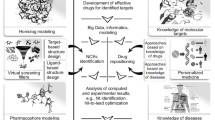Abstract
The National Library of Medicine began in 1836 as a small collection of books in the office of the Army Surgeon General. Today, the National Library of Medicine is the world’s largest medical library, providing access to its vast collection of seven million items onsite and through the World Wide Web. Historical interest in drug information dates to 1967, when Congress provided funds for a Drug Literature Program at the National Library of Medicine. Drug information is now dispersed among a number of National Library of Medicine bibliographic and factual databases that offer an array of clinical, research, and toxicological drug data. Target audiences for drug information include consumers, patients, healthcare practitioners, clinical researchers, and scientists. Drug development and medical publishing have both accelerated to such an extent that it is virtually impossible for healthcare practitioners and researchers to keep apprised of current information. Due to wide utilization for posting medically-related data, the Internet is discussed in terms of its impact on medical library responsibilities, the need to preserve clinical and scientific information in the public domain, and how such imperatives indicate a need to create new drug-related databases, including an Internet portal to drug information.
Similar content being viewed by others
References
Miles WD. A History of the National Library of Medicine: the Nation’s Treasury of Medical Knowledge. Washington, DC: US Government Printing Office; 1982.
Humphreys BL. Adjusting to progress: interactions between the National Library of Medicine and health sciences librarians, 1961–2001. J Med Libr Assoc. 2002;90:4–20.
National Library of Medicine. National Library of Medicine Programs & Services 2001. Bethesda, MD: National Library of Medicine, National Institutes of Health; 2001. Available at http://www.nlm.nih.gov/ocpl/anreports/fy2001.pdf.
National Library of Medicine. Fact Sheet: The National Library of Medicine. January 30, 2003, Available at http://www.nlm.nih.gov/pubs/factsheets/nlm.html.
Benson DA et al. GenBank. Nucl Acids Res. 2002; 30:17–20.
Wortman M. Targeting cancer by subtype. Yale Med. 2002;36:28–34.
Sander C. Genomic medicine and the future of health care. Science. 2000;287:1977–1978.
Author information
Authors and Affiliations
Corresponding author
Additional information
“The National Library of Medicine and Drug Information. Part 2: An Evolving Future” will be published in the next issue of the Drug Information Journal.
Rights and permissions
About this article
Cite this article
Knoben, J.E., Phillips, S.J. & Szczur, M.R. The National Library of Medicine and Drug Information. Part 1: Present Resources. Ther Innov Regul Sci 38, 69–81 (2004). https://doi.org/10.1177/009286150403800110
Published:
Issue Date:
DOI: https://doi.org/10.1177/009286150403800110




